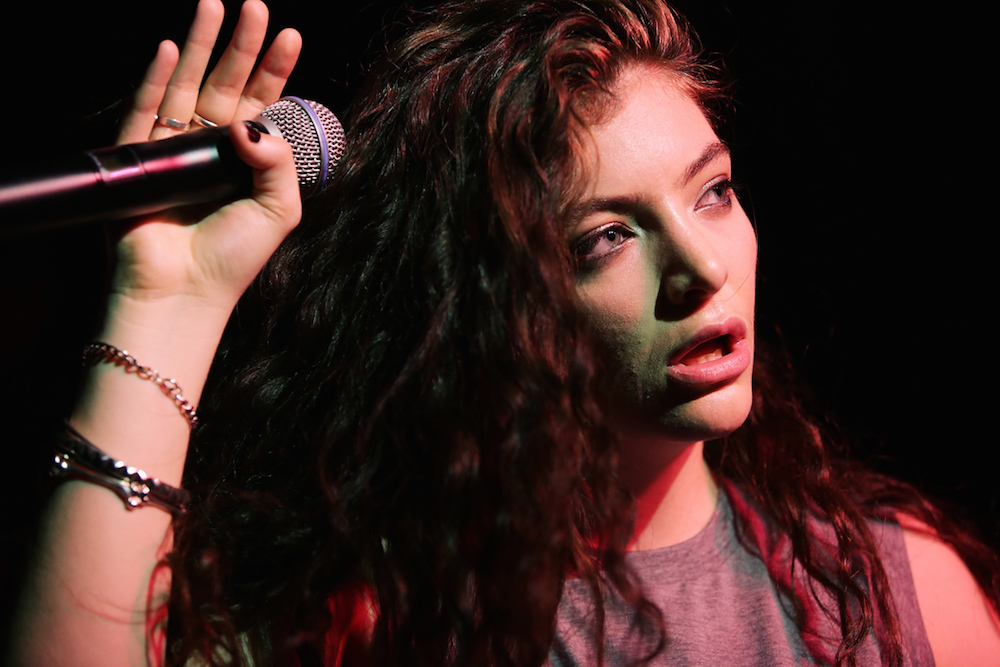Painting a Song: Lorde's Synesthesia Turns Colors into Music

Lorde — the 20-year-old singer and songwriter of the hits "Royals" and "Green Light" — has a rare neurological condition called synesthesia, and she said it helps her to write her wildly popular music.
Between 1 percent and 4 percent of people have synesthesia, a condition in which different senses are mixed, according to a 2011 study published in the journal PLOS Biology. In Lorde's case, sound-to-color synesthesia means that she sees specific colors when certain notes are played. The New Zealand native's next album, "Melodrama," is expected to be released in June, and she said each song is a creation of her imagination, synesthesia and collaborators.
"From the moment I start something, I can see the finished song, even if it's far-off and foggy," Lorde recently told The New York Times. As she works on a piece, she strives to fill in the best hues as the musical image evolves into a concrete creation, she told the Times. "It's about getting the actual thing to sound like what I've been seeing," she said. [Top 10 Mysteries of the Mind]
For instance, in a 2015 Q&A with Tumblr, Lorde said the 2013 song "Tennis Court" from her first album was originally too tan, but she eventually turned it a better color (green) after working on its pre-chorus, according to New Musical Express, a British music magazine.
However, unlike Lorde, most people with synesthesia have what's known as grapheme-color synesthesia. When people with this condition see a number or letter, they associate it with a specific color, such as always perceiving the letter "T" as blue or the number "5" as yellow, even while reading black-and-white print.
There are more than 60 types of synesthesia, but the more common diagnoses include chromesthesia (perceiving colors after hearing certain sounds), lexical-gustatory synesthesia (perceiving certain tastes after hearing particular words) and spatial-sequence synesthesia (visualizing numbers, such as dates and times, as points in space; for instance, 2000 may appear farther back physically than 2010), Live Science reported previously.
Exactly how the condition works is still a mystery. In some cases, it develops after people use drugs or experience brain damage or sensory deprivation, but recent work looking at the brains of people with naturally occurring synesthesia suggests that they have an increased number of connections among their brain's sensory regions, Live Science reported previously.
Get the world’s most fascinating discoveries delivered straight to your inbox.
It's possible that these anomalous, crisscrossing connections cause a tangling and pairing of certain senses, Thomas Palmeri, a professor of psychology at Vanderbilt University in Nashville, Tennessee, wrote in Scientific American.
Or perhaps childhood learning paradigms can explain the condition's genesis, some researchers have said. For example, when young children learn the alphabet, letters are often presented in different colors. In fact, children often learn about color categorization between the ages of 4 and 7, the same time that they begin to read and write, Live Science reported in an earlier piece.
While synesthesia is rare in the general population, it's not uncommon to see it in artists, such as Lorde. Research shows that the condition is seven times more common in visual artists, poets and novelists compared with the general public, Live Science reported. It's even possible that synesthesia helps people sense links between seemingly random ideas, helping them generate creative ideas, said Vilayanur Ramachandran, a cognitive neuroscientist at the University of California, San Diego.
People with autism also have higher rates of synesthesia (about 19 percent) compared with the general public, a 2013 study in the journal Molecular Autism found. It's unclear why this is, but one hypothesis is that people with autism have unusual neural connections in certain parts of the brain, which may lead to synesthesia, Simon Baron-Cohen, a professor of developmental psychopathology at the University of Cambridge in the United Kingdom, told Live Science.
The findings from that study may help researchers understand the common factors that contribute to brain development in both autism and synesthesia, Baron-Cohen said.
Original article on Live Science.

Laura is the managing editor at Live Science. She also runs the archaeology section and the Life's Little Mysteries series. Her work has appeared in The New York Times, Scholastic, Popular Science and Spectrum, a site on autism research. She has won multiple awards from the Society of Professional Journalists and the Washington Newspaper Publishers Association for her reporting at a weekly newspaper near Seattle. Laura holds a bachelor's degree in English literature and psychology from Washington University in St. Louis and a master's degree in science writing from NYU.

